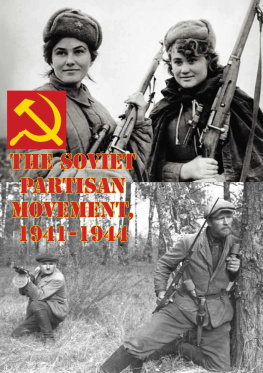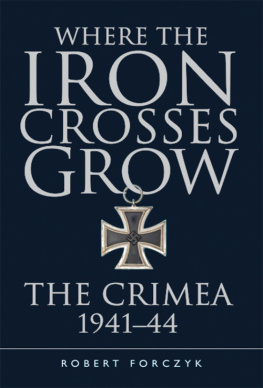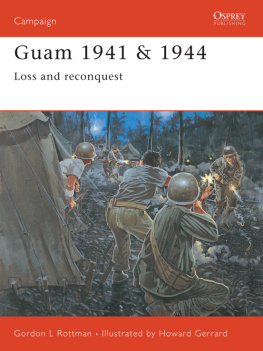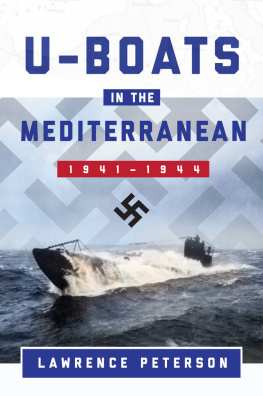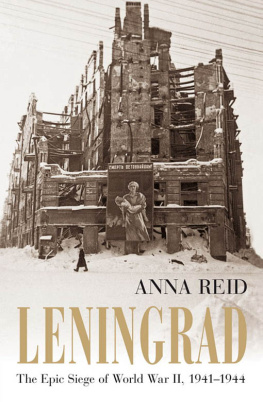This edition is published by PICKLE PARTNERS PUBLISHINGwww.picklepartnerspublishing.com
To join our mailing list for new titles or for issues with our books picklepublishing@gmail.com
Or on Facebook
Text originally published in 1956 under the same title.
Pickle Partners Publishing 2014, all rights reserved. No part of this publication may be reproduced, stored in a retrieval system or transmitted by any means, electrical, mechanical or otherwise without the written permission of the copyright holder.
Publishers Note
Although in most cases we have retained the Authors original spelling and grammar to authentically reproduce the work of the Author and the original intent of such material, some additional notes and clarifications have been added for the modern readers benefit.
We have also made every effort to include all maps and illustrations of the original edition the limitations of formatting do not allow of including larger maps, we will upload as many of these maps as possible.
THE SOVIET PARTISAN MOVEMENT 1941-1944
BY
EDGAR M. HOWELL
TABLE OF CONTENTS
Contents
FOREWORD
Unconventional warfare has gained in importance along with the increase in range and destructiveness of weapons. It was a particularly potent factor in several theaters of operations during World War II, but in none did it play a more significant role than on the Eastern front during that conflict. There the guerrilla movement behind the Axis forces gained in importance as the Soviet Army withdrew deeper and deeper into its homeland, trading space for time until mobilization could be completed and winter act as an ally.
If The Soviet Partisan Movement, 1941-1944 is studied in connection with operational studies of the war on the east European front during World War II, it should prove to be of great value to students of that conflict. It should also prove of particular value to the Army staff and schools and colleges as a reference work in partisan warfare.
PREFACE
The purpose of this text is to provide the Army with a factual account of the organization and operations of the Soviet resistance movement behind the German forces on the Eastern Front during World War II. This movement offers a particularly valuable case study, for it can be viewed both in relation to the German occupation in the Soviet Union and to the offensive and defensive operations of the Wehrmacht and the Red Army.
The scope of the study includes an over-all picture of a quasi-military organization in relation to a larger conflict between two regular armies. It is not a study in partisan tactics, nor is it intended to be. German measures taken to combat the partisan movement are sketched in, but the story in large part remains that of an organization and how it operated. The German planning for the invasion of Russia is treated at some length because many of the circumstances which favored the rise and development of the movement had their bases in errors the Germans made in their initial planning. The operations of the Wehrmacht and the Red Army are likewise described in considerable detail as the backdrop against which the operations of the partisan units are projected.
Because of the lack of reliable Soviet sources, the story has been told much as the Germans recorded it. German documents written during the course of World War II constitute the principal sources, but many survivors who had experience in Russia have made important contributions based upon their personal experience.
The study was prepared in the Special Studies Division, Office of the Chief of Military History, under the supervision and direction of the chief of that Division. Maj. Edgar M. Howell, AUS-Ret., initiated the project and carried it through to completion. He was assisted in his research in the German records by Lt. Larry Wolff, Lt. William Klepper, Jr., and Miss Leopoldina Novak.
PART ONE GERMAN PLANNING FOR THE INVASION AND OCCUPATION OF RUSSIA
CHAPTER 1 BACKGROUND
In the military history of few countries of the world have topography, climate, and population played such decisive roles as Russia. The sheer size of the land, its formidable array of natural obstacles, the violent seasonal variations of climate, and the e-mindedness of the civilian populace in the face of alien pressure are unmatched. Time and again great powers have invaded Russia with powerful military machines, winning striking victory after victory, only to be ultimately defeated and driven out.
The USSR, which comprises astern half of Europe and the northern and central part of Asia, is the largest continuous political unit in the world. Occupying some 8,400,000 square miles, roughly one-sixth of the habitable land surface of the earth, it is nearly three times the size of the United States, and larger than all North America. It extends from Romania, Poland, the Baltic Sea, Finland in the west to China, Manchuria, and the Pacific Ocean in the east, a distance of some 6,000 miles. From north to south it stretches from the Arctic Circle to Turkey, Persia, Afghanistan, and Mongolia, a maximum distance of some 3,000 miles.
In this huge area are something over 200 million people, about one-tenth of the world's population, including 174 races, nationalities, and tribes, speaking 125 different languages or dialects, and professing faith to some 40 different religions. Of the ethnic groups, however, only 93 are composed of more than 10,000 people. Of the total population, 153,000,000 are of Slavic origin, divided roughly as follows: Great Russians, 105 millions; Ukrainians, 37 millions; and White Russians, 8 millions, with a scattering of Poles, Bulgars, and Czechs. The Slavs are chiefly of the Greek Orthodox faith. In addition, there are some 21 million Turko-Tartars, predominantly Mohammedan.
European Russia
European Russia with which this study is primarily concerned-may be considered that portion of the USSR lying between Central Europe and the Ural Mountains. Although it represents but a fraction of the entire country, by European standards it encompasses a tremendous expanse of territory. The distance from the 1941 Polish border to Moscow is some 600 miles, to Leningrad, nearly 500; to Stalingrad far to the east on the Volga River, 900; to the foothills of the Caucasus Mountains, 950. Laterally, the distance from Leningrad to the north to Odessa on Black Sea is 900 miles.
Topography
Almost all European Russia is taken up by the East European Plain. This plain, which is actually a series of low plateaus, has an average elevation of some 500 feet, reaching a maximum of 800-900 feet in the Valday Hills. In a broad, general sense, the land is if very low relief with no abrupt geographical changes. Despite this topographic monotony, however, the land offers a series of natural obstacles as protection for the heart of the country that is matched by no other area of comparable size.
The greatest single natural barrier in the country is the Pripyat Marshes which lie between White Russia and the western Ukraine and comprise more than 150,000 square miles of densely forested swamps. Other than for a few man-made routes they are impassable except when frozen. Adjoining them on the north is a belt of forests and swamps which covers western White Russia. This belt together with the deep woodlands in the Gomel Bryansk areas and between Vyazma and Moscow forms a succession of natural defenses against any thrust toward Moscow. The topography of the Baltic States and northwest Russia is similar, with forests, swamps, and numerous small lakes predominating. In the south are the broad, treeless steppes of the Ukraine.




